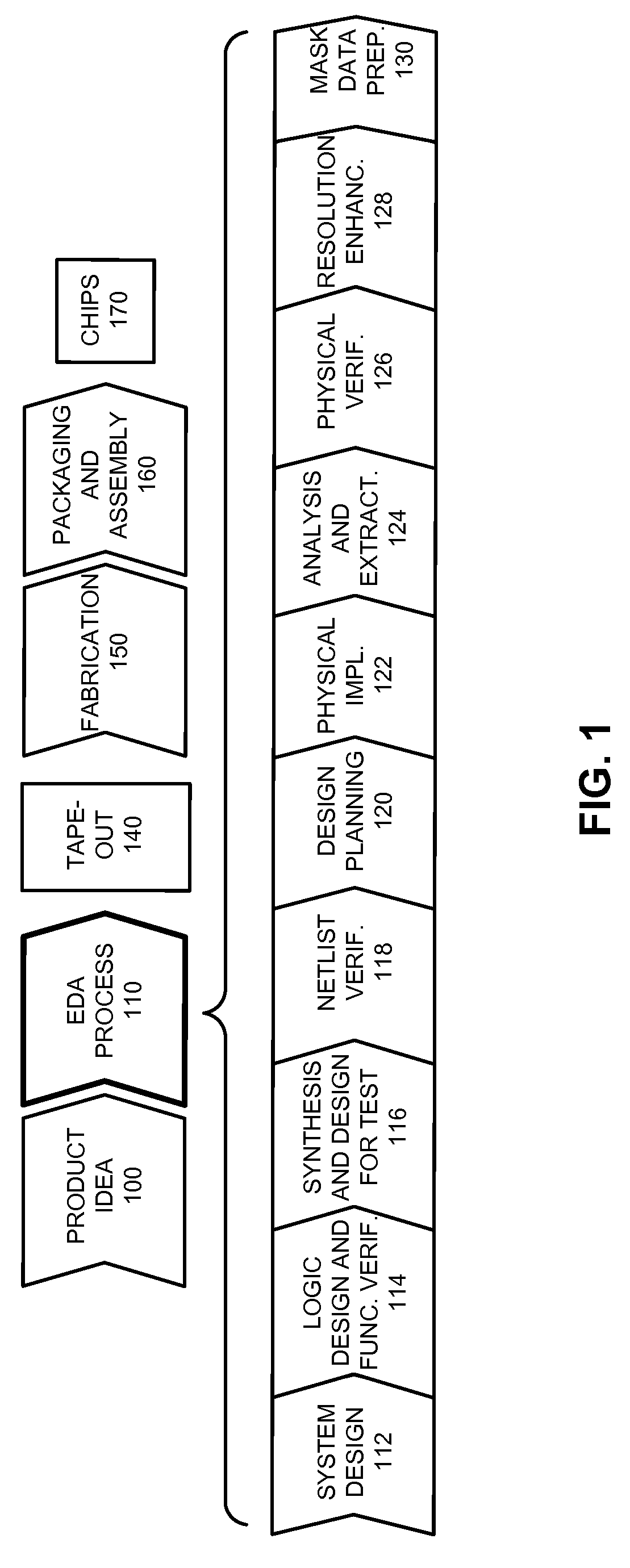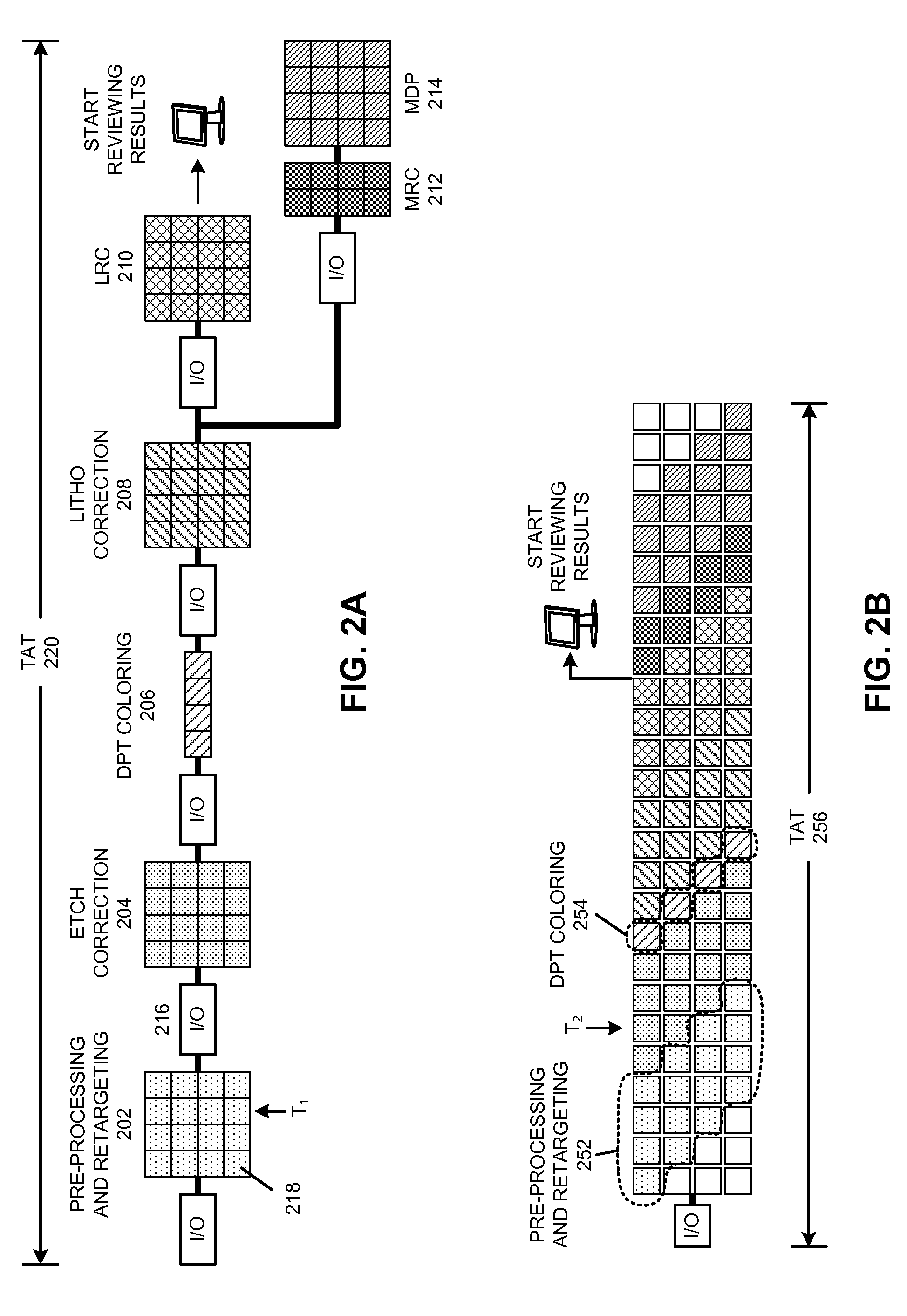Incremental concurrent processing for efficient computation of high-volume layout data
a layout data and concurrent processing technology, applied in the field of electronic design automation, can solve the problems of throttling actual cycle times, i/o and resource contention showing serious bottlenecks, and becoming increasingly difficult to meet such requirements, and achieve the effect of improving the overall performance of the system
- Summary
- Abstract
- Description
- Claims
- Application Information
AI Technical Summary
Benefits of technology
Problems solved by technology
Method used
Image
Examples
example
Template Generation
[0099]FIG. 3 illustrates templates in accordance with an embodiment of the present invention.
[0100]Layout 302 includes cell instances 304 and 306 which are instances of the same cell. Note that, since cell instances 304 and 306 are instances of the same cell, the layout shapes associated with these cell instances are most likely going to be very similar. For example, as shown in blow up 308 and blow up 310, the shape of cell instance 304 is very similar to the shape of cell instance 306. However, as also shown in blow ups 308 and 310, the cell instances may be surrounded by shapes that are different from one another.
[0101]A template is a region in the layout which can be used to perform a computation on the layout. The size and shape of a template can depend on the application. For example, for OPC, the size of the template may be based on the interaction ranges of the OPC kernels.
[0102]In FIG. 3, templates 312 and 314 include cell instances 304 and 306, respectiv...
PUM
 Login to View More
Login to View More Abstract
Description
Claims
Application Information
 Login to View More
Login to View More - R&D
- Intellectual Property
- Life Sciences
- Materials
- Tech Scout
- Unparalleled Data Quality
- Higher Quality Content
- 60% Fewer Hallucinations
Browse by: Latest US Patents, China's latest patents, Technical Efficacy Thesaurus, Application Domain, Technology Topic, Popular Technical Reports.
© 2025 PatSnap. All rights reserved.Legal|Privacy policy|Modern Slavery Act Transparency Statement|Sitemap|About US| Contact US: help@patsnap.com



